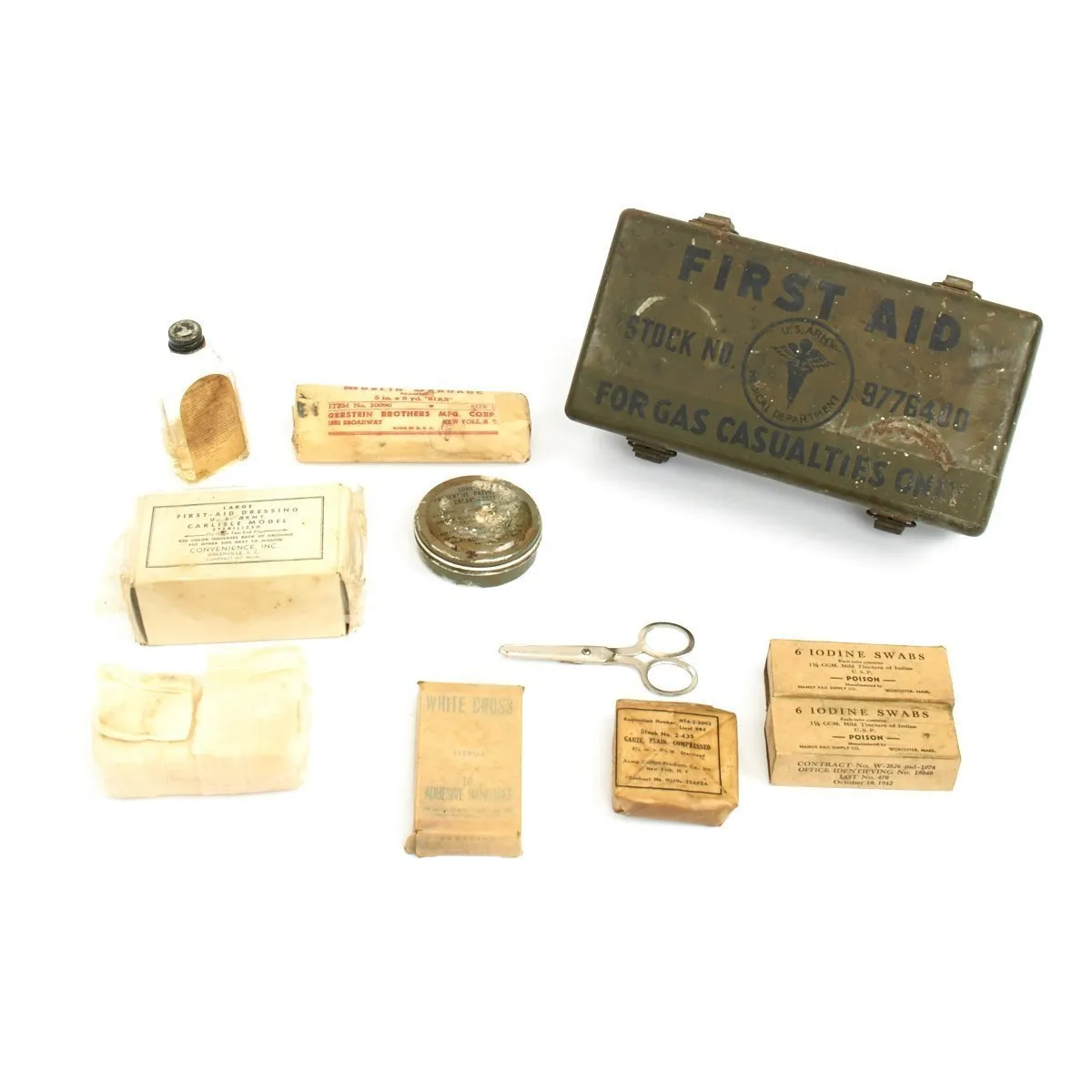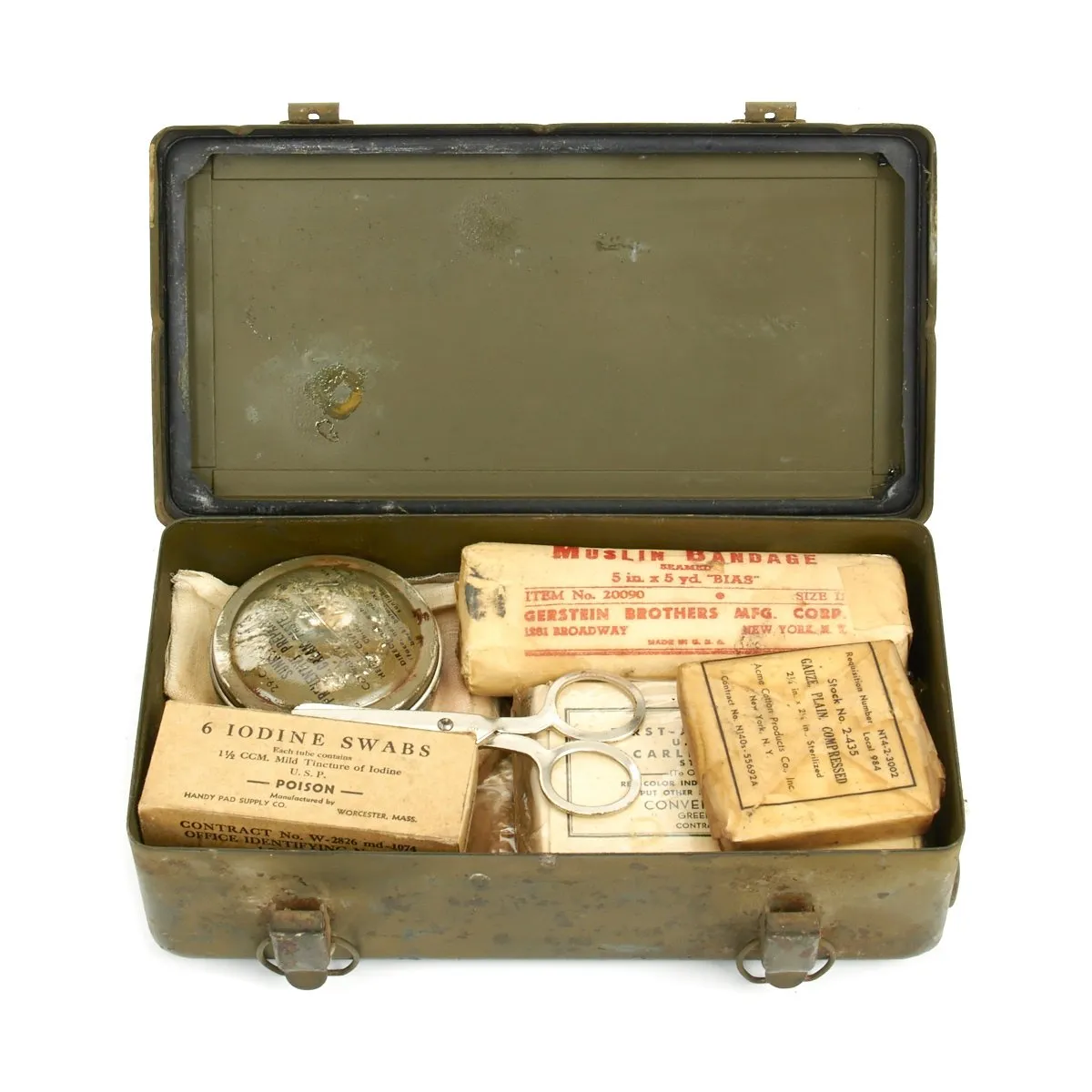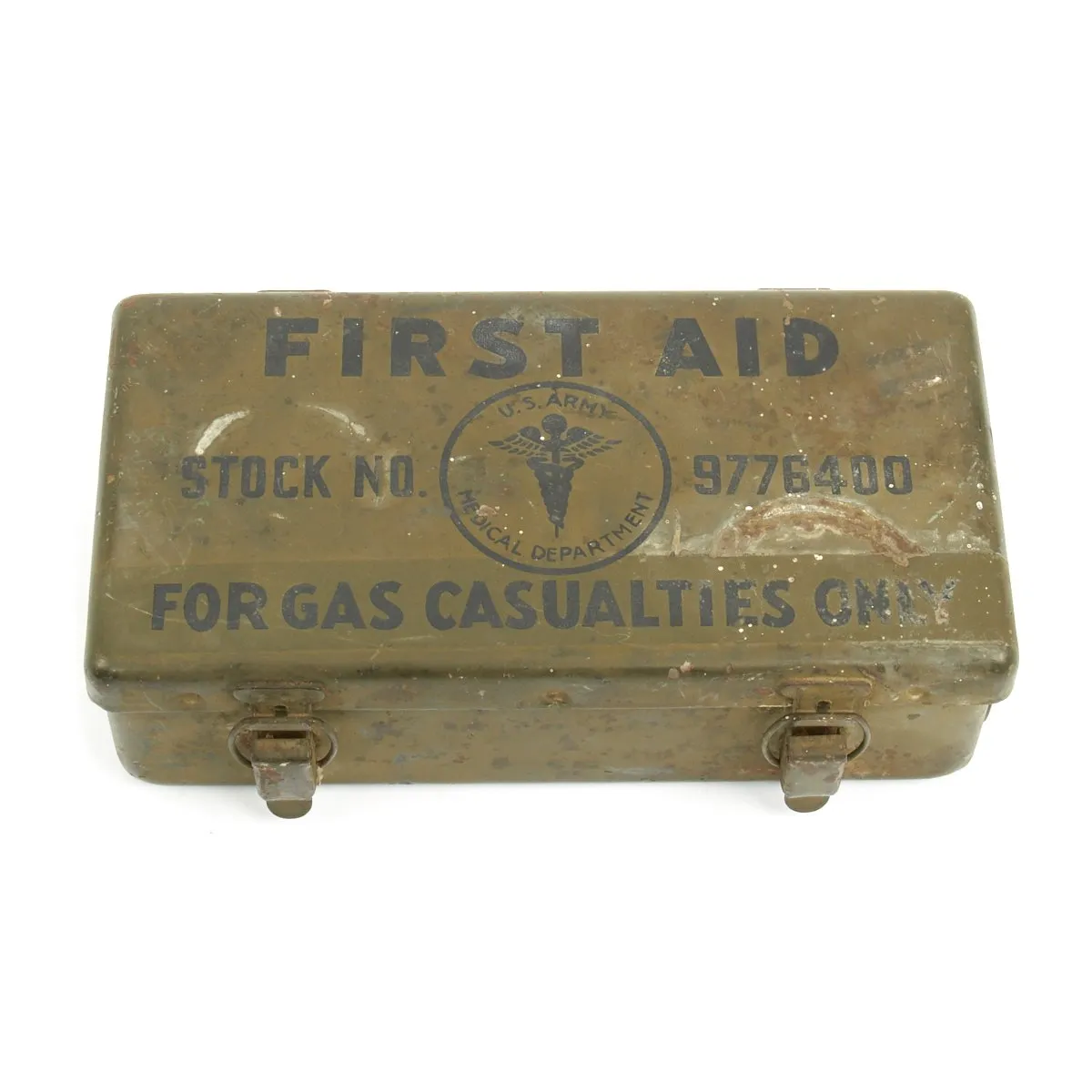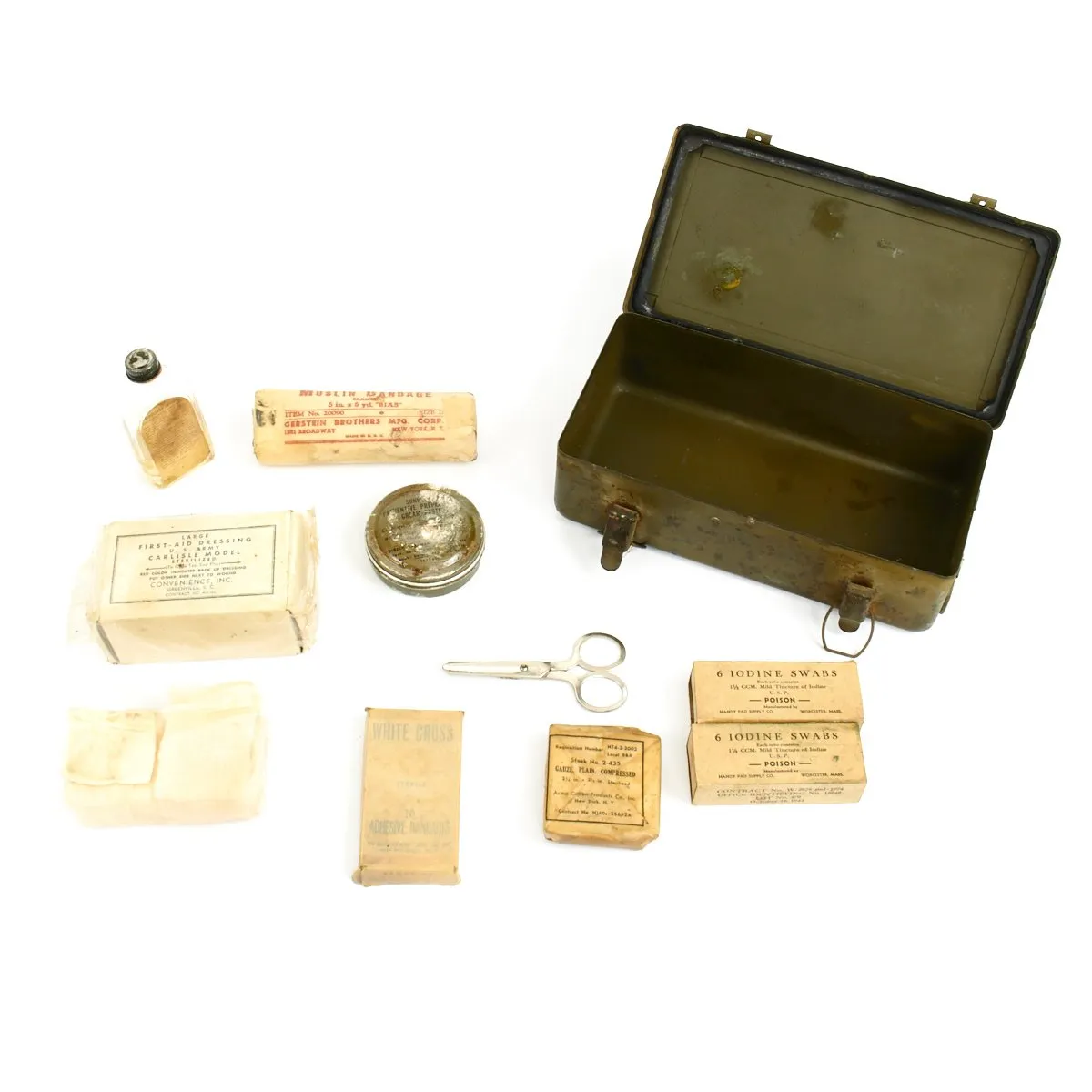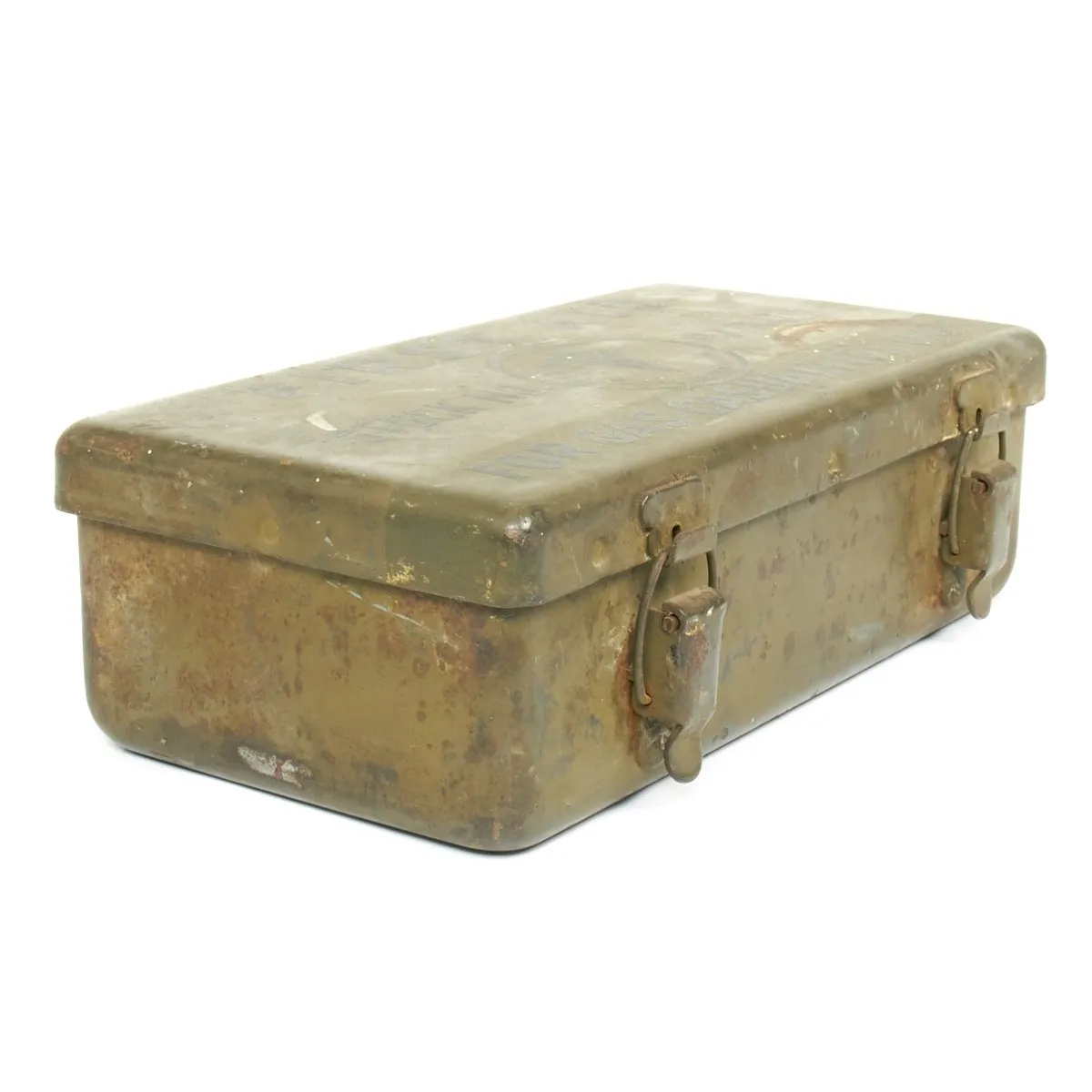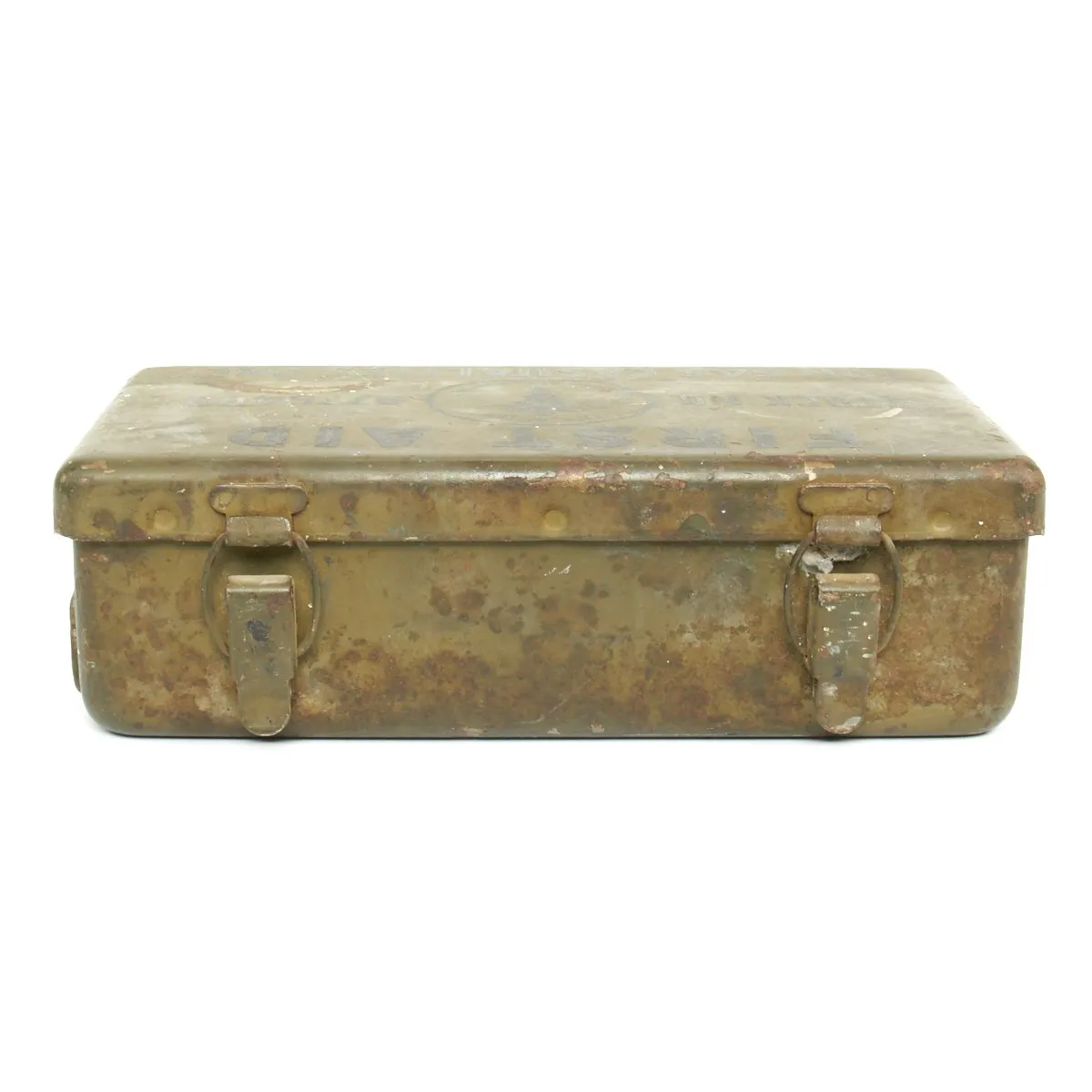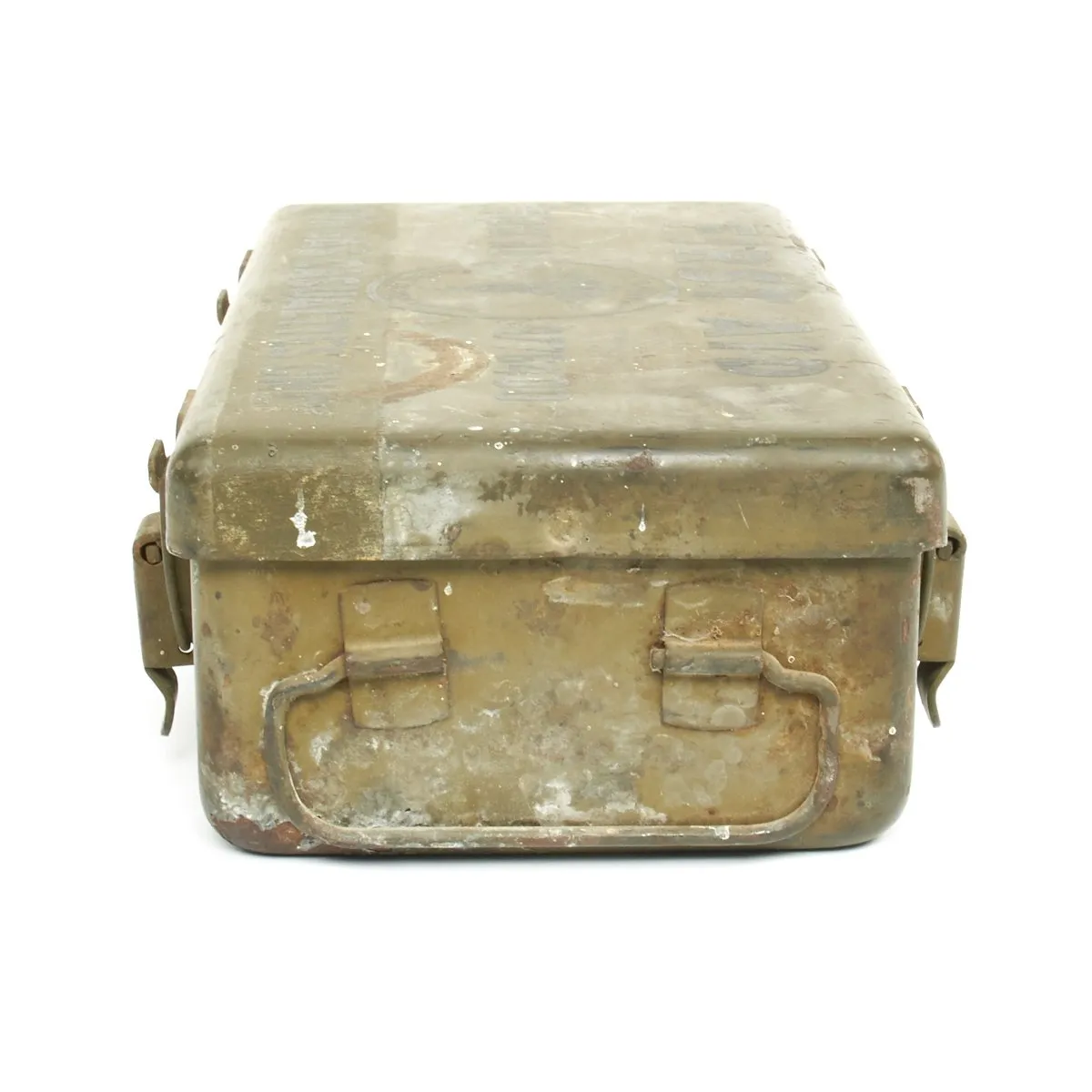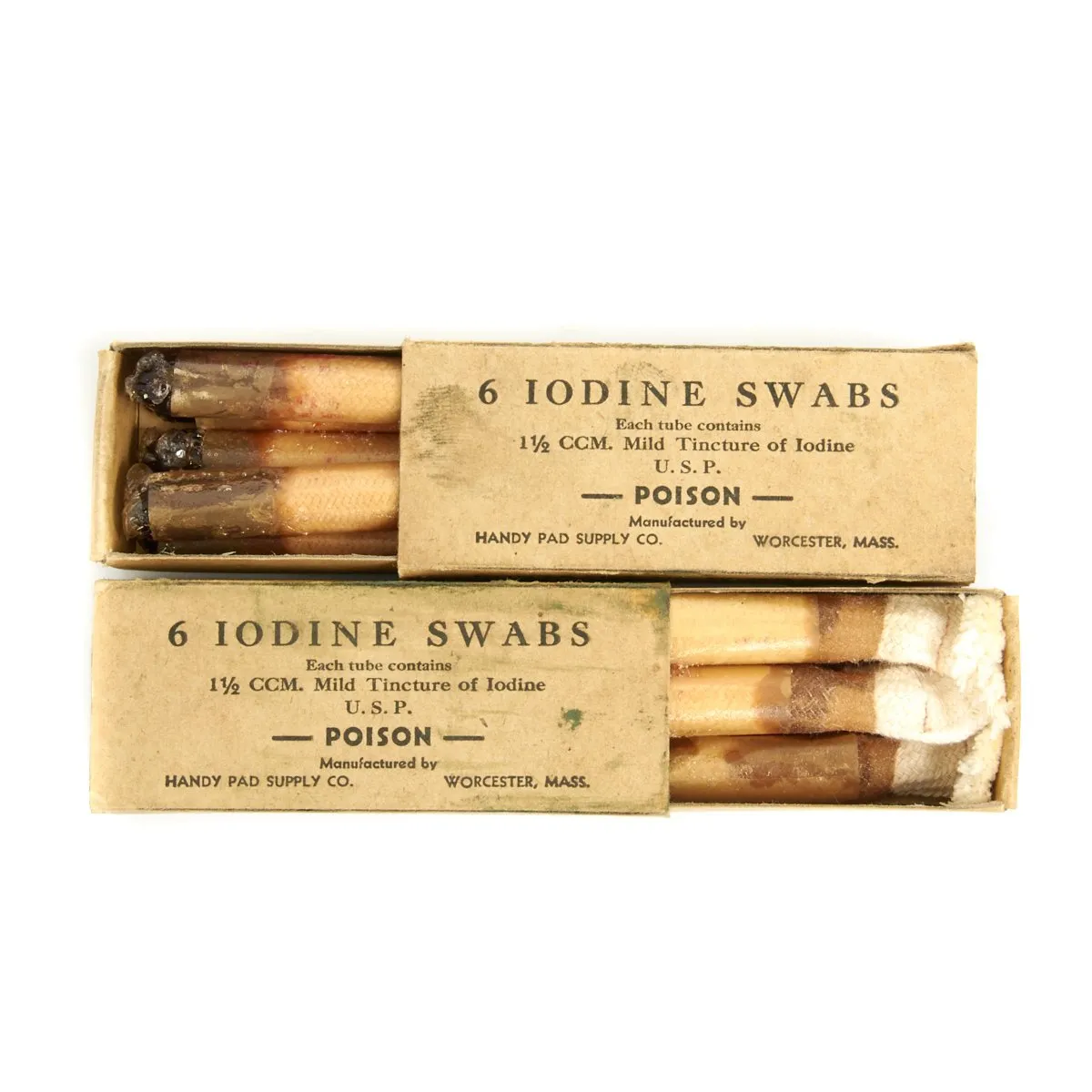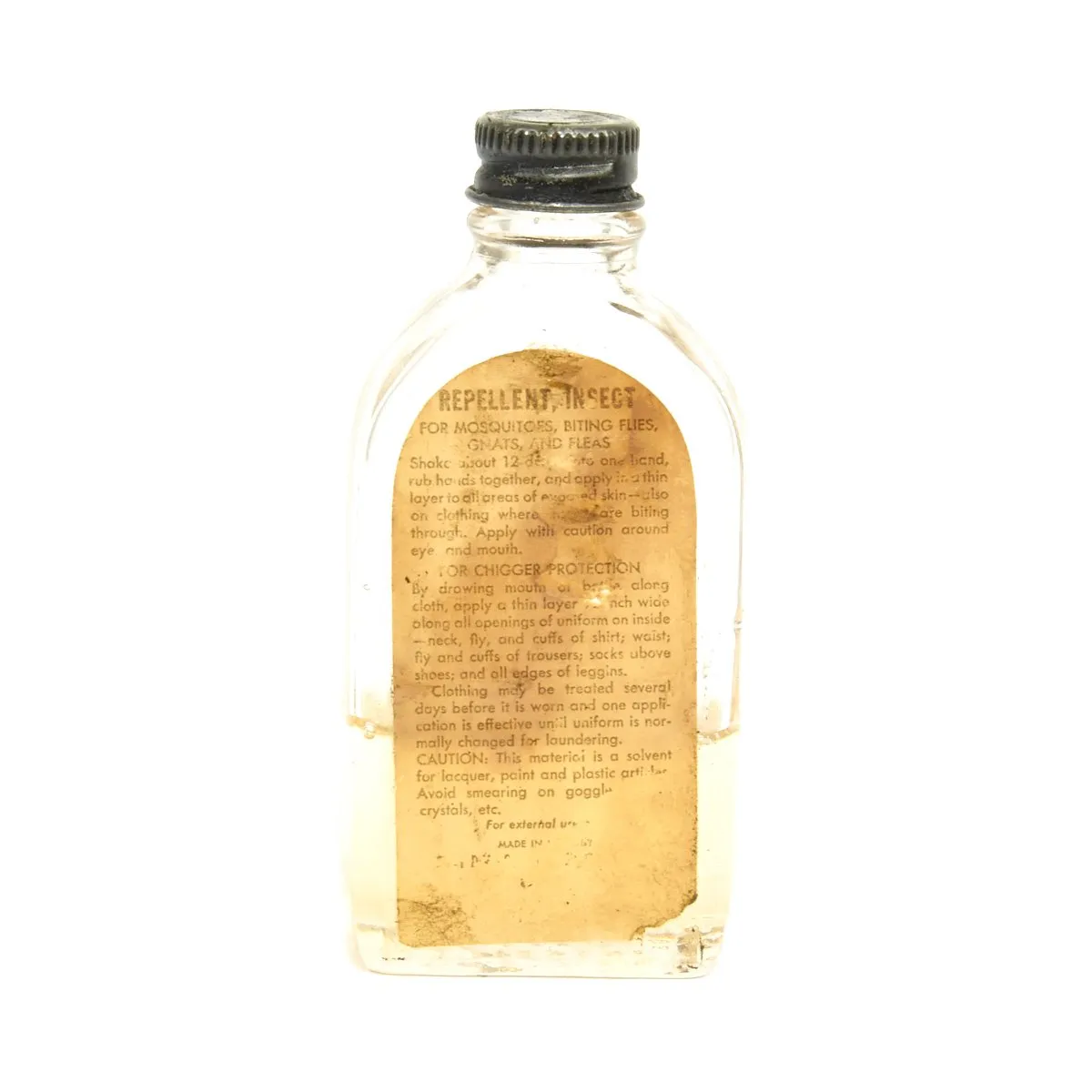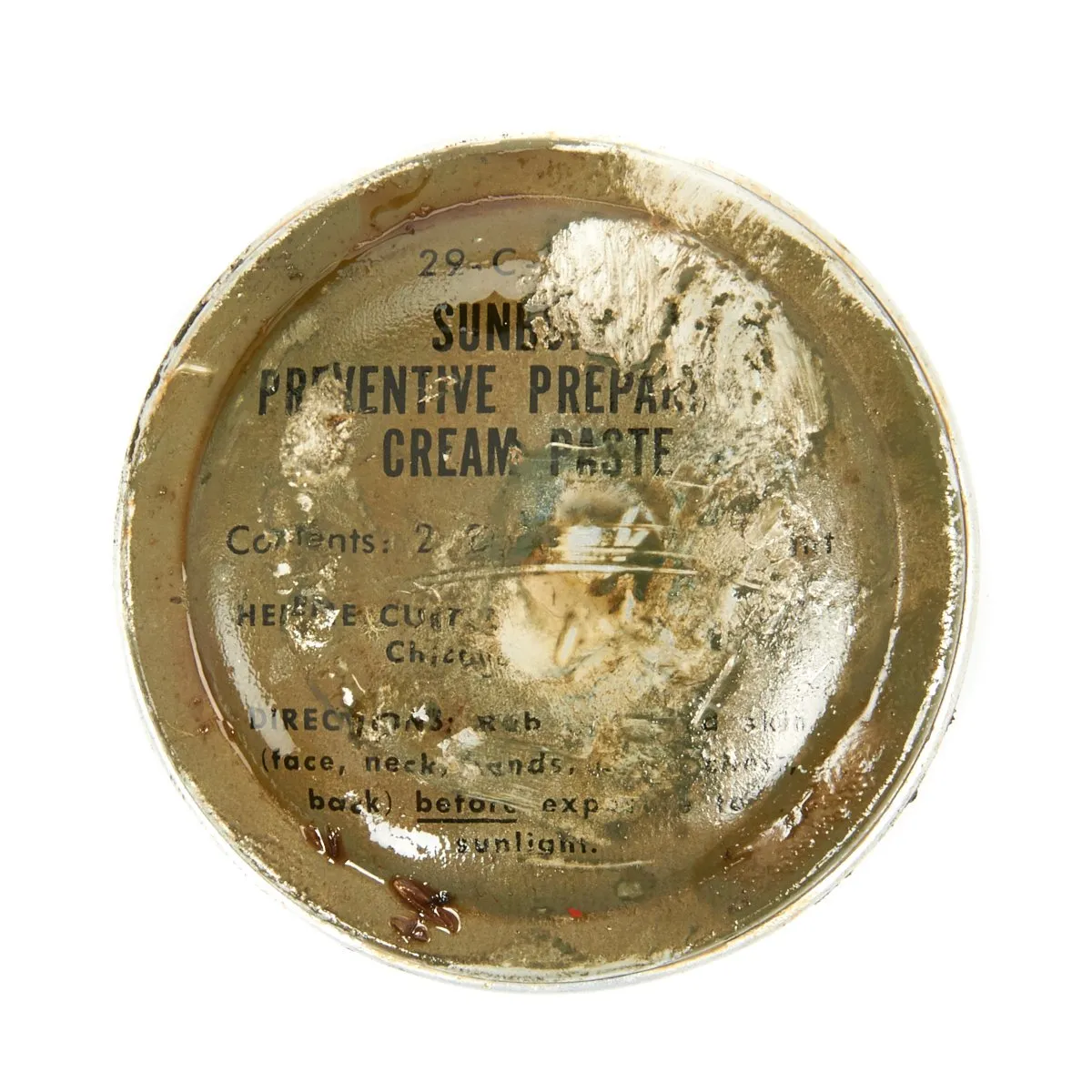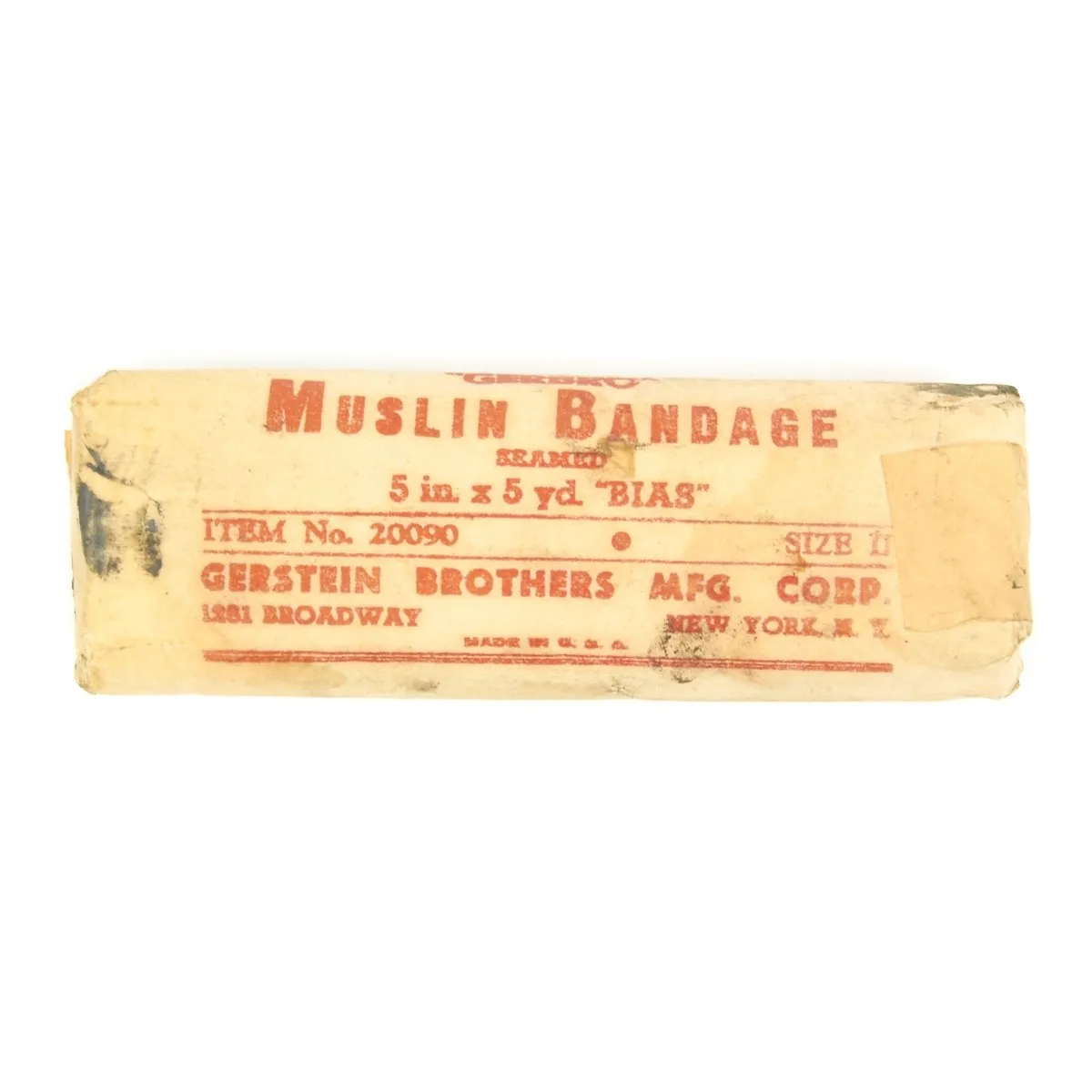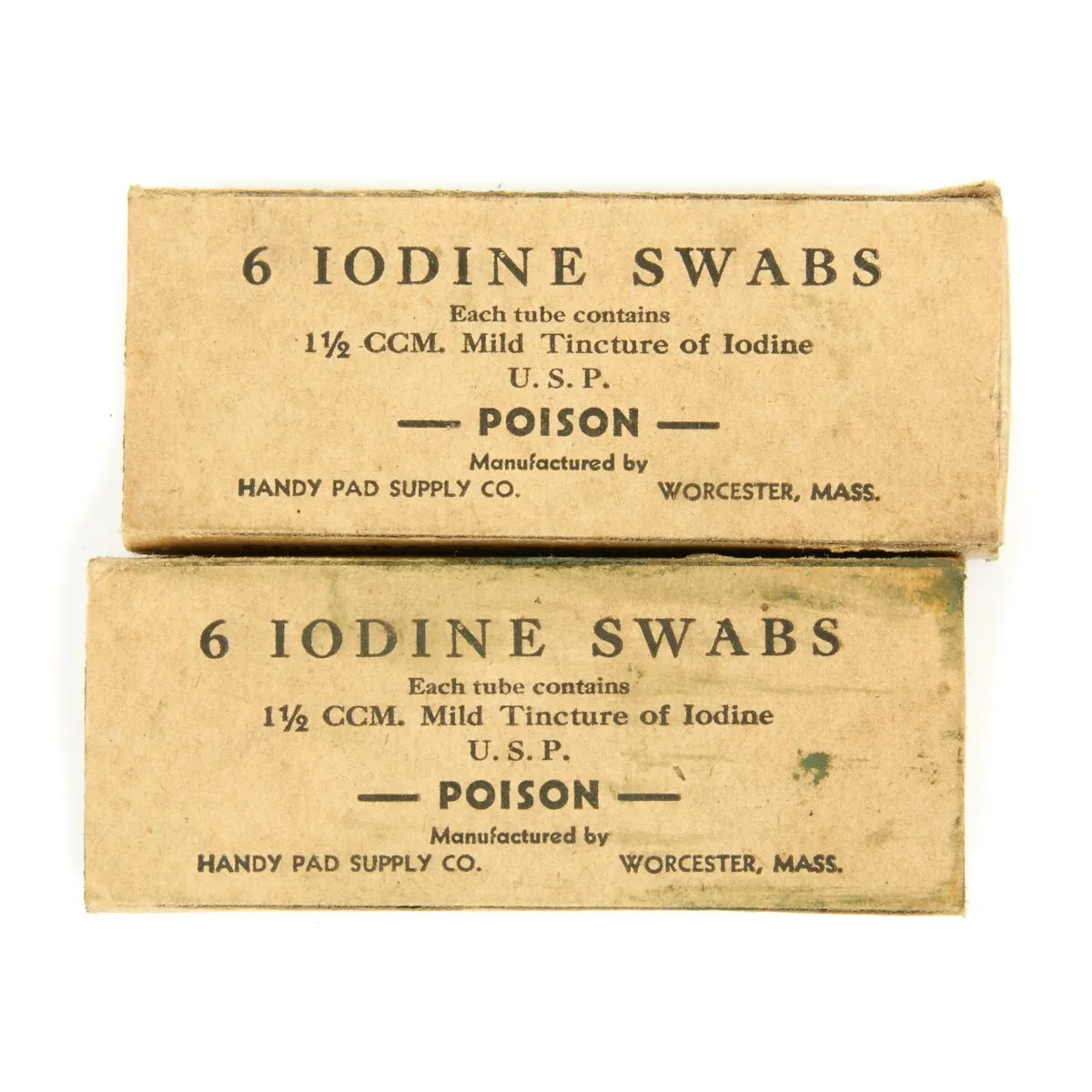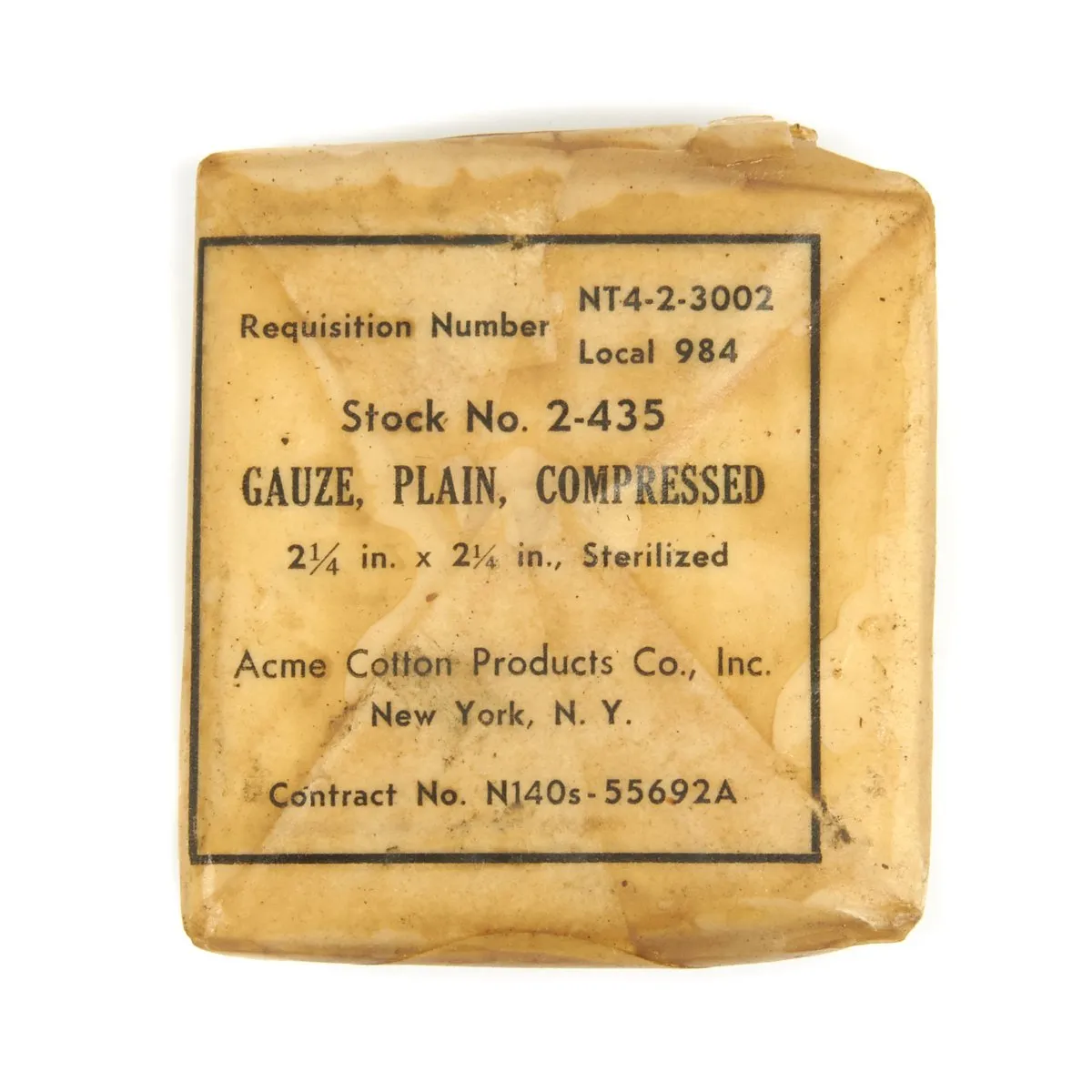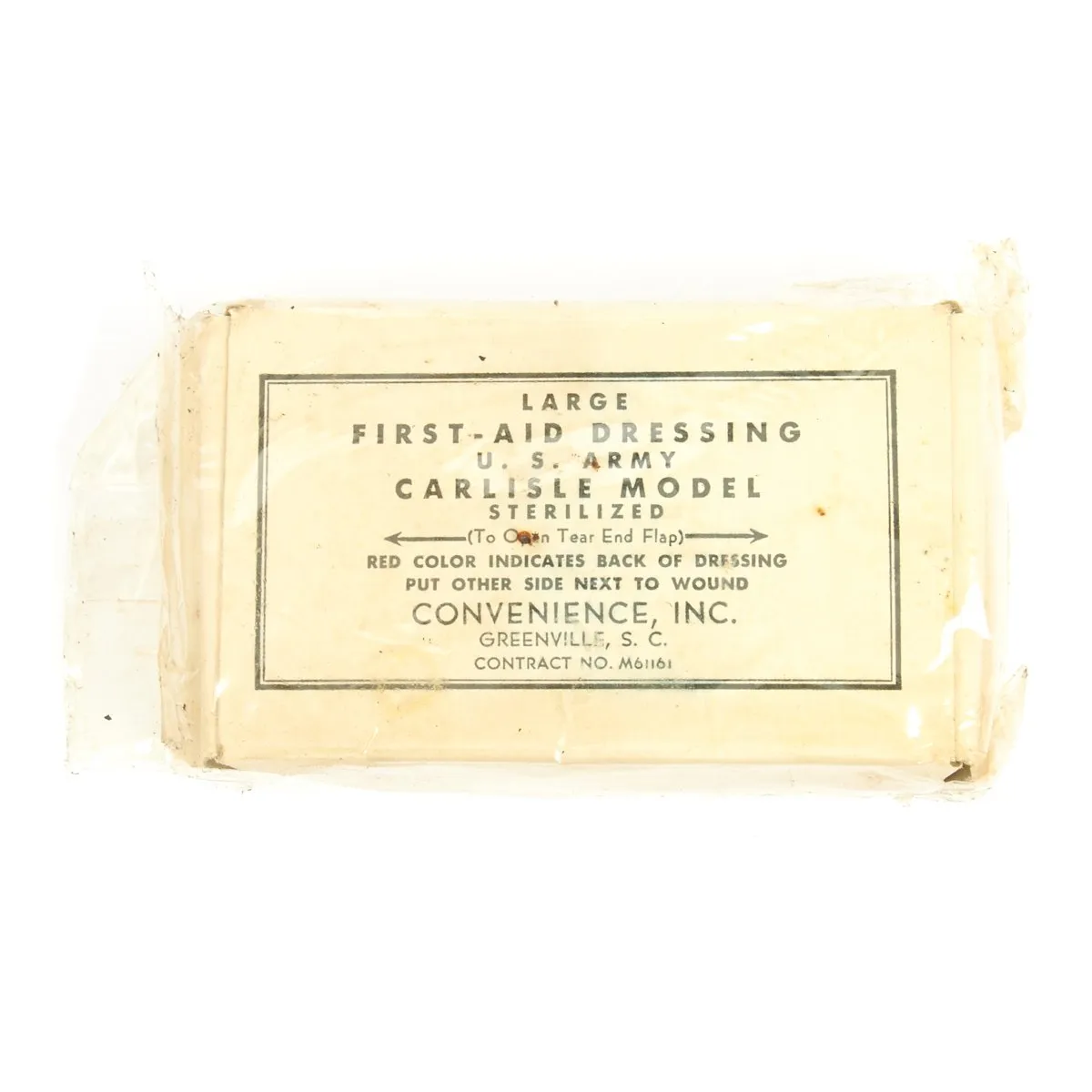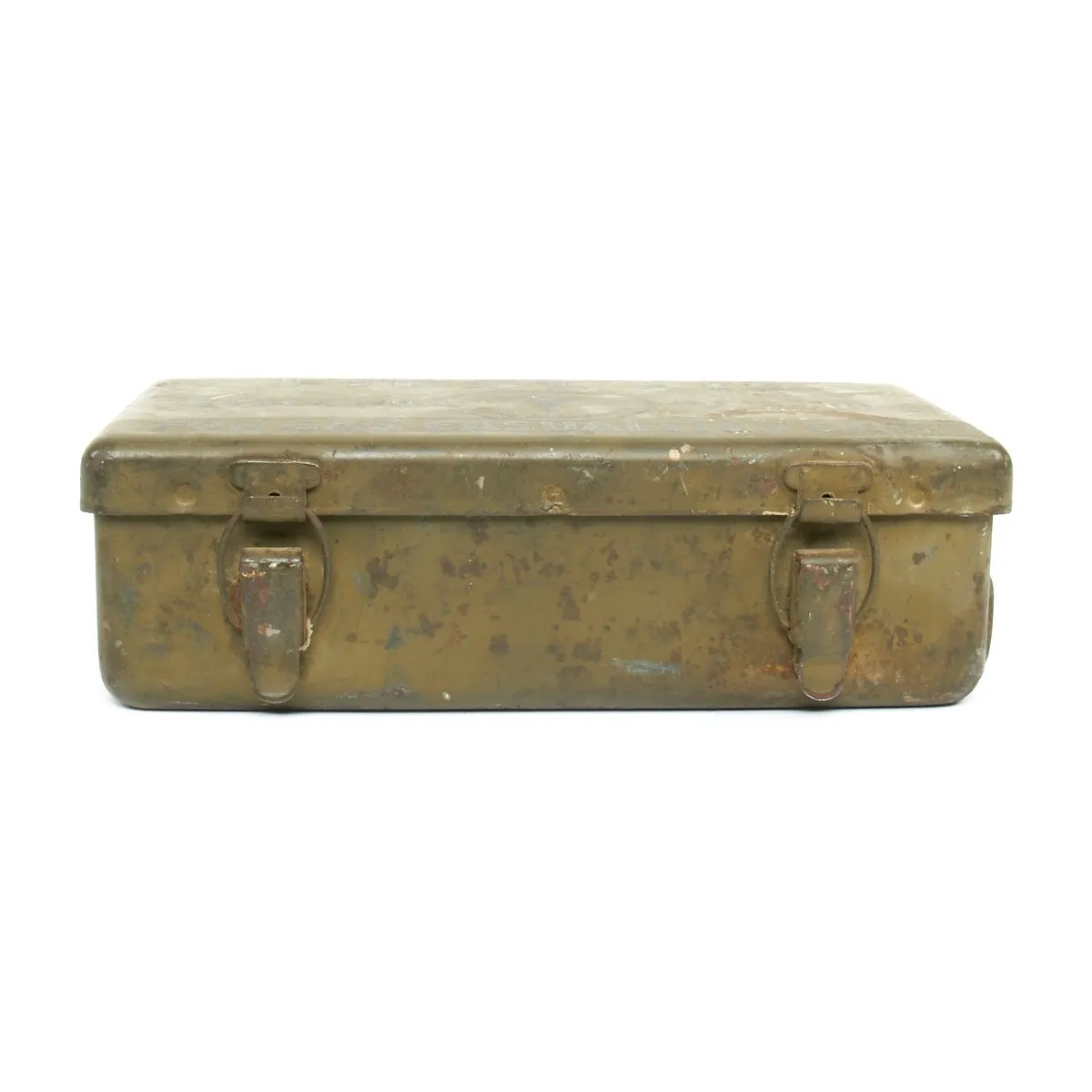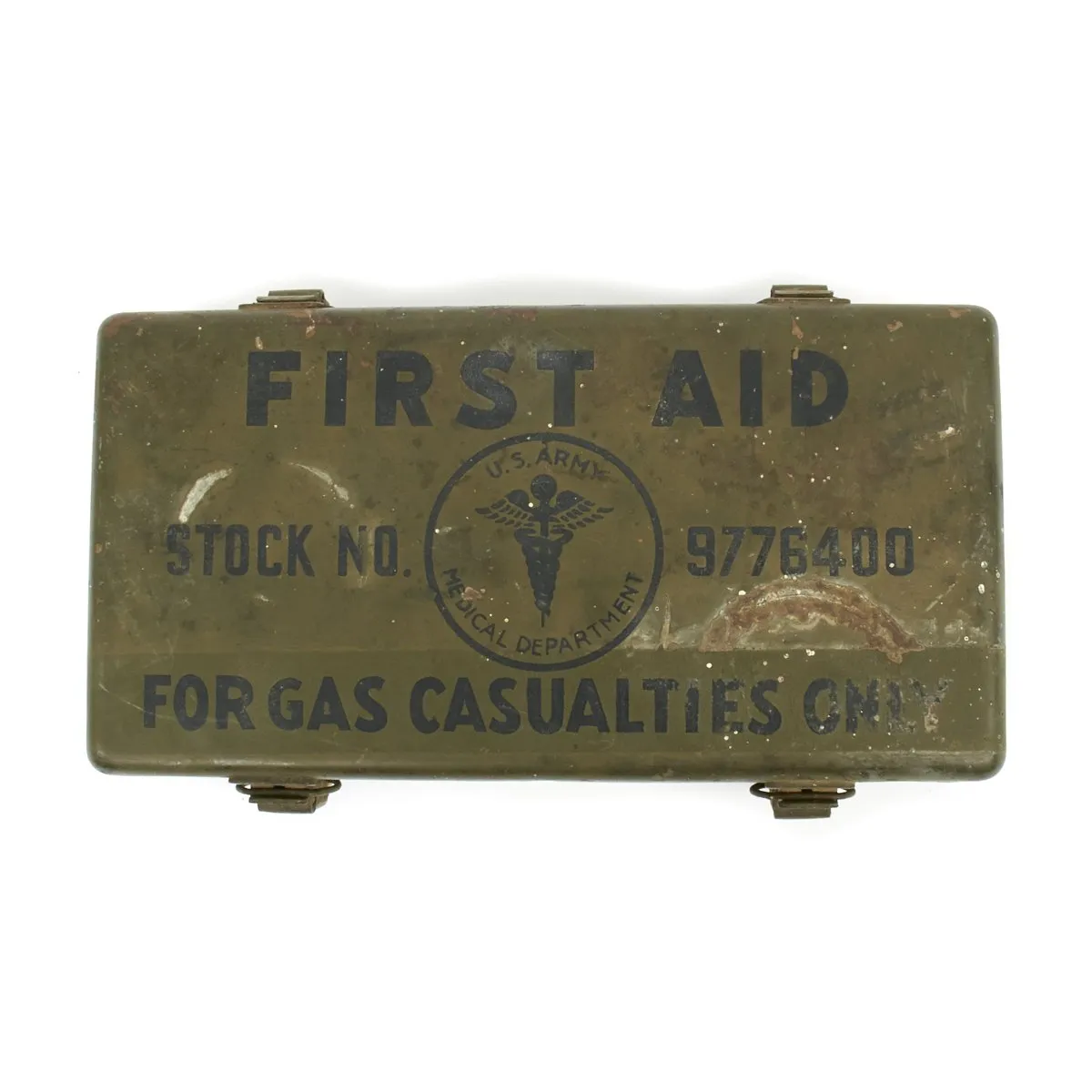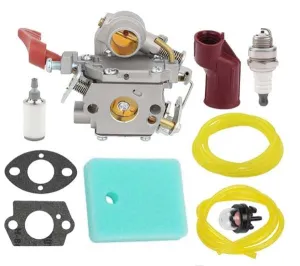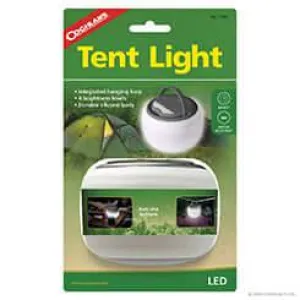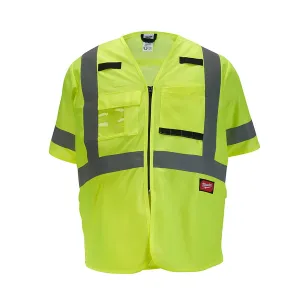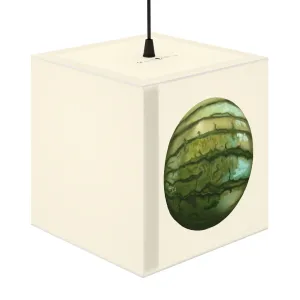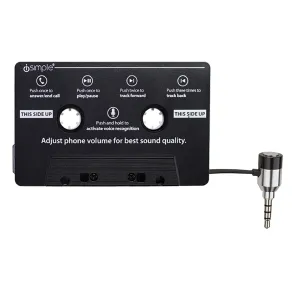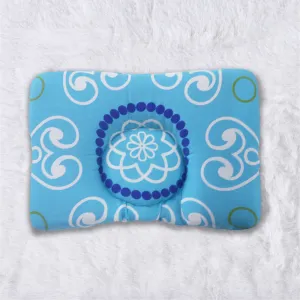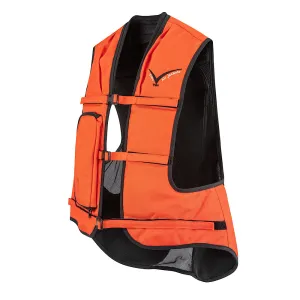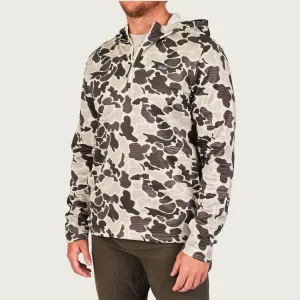Original Items: Only One Available. The Kit, First Aid, Gas Casualty was typically carried in vehicles for treatment of injury due to chemical agents. FM 21-11 First Aid For Soldiers dated 7 April 1943 indicates an allotment of one Gas Casualty First Aid Kit for each 25 soldiers. The original stock number of the kit was 97764, later 9776400.
Quoting from Medical Department United States Army in World War II, Chapter III, Chemical Warfare:
The teaching of first aid in chemical warfare was extremely difficult. Most chemical agents required separate rituals, and it was necessary for the soldier to be able to distinguish between different gases at a time when circumstances would make the differentiation difficult if not impossible. Instruction on these matters during the war was gradually made as simple as possible, with the idea that if the soldier did not bear in mind all the details he had been taught at least he would remember certain essential points.
To provide first aid to gas casualties, ointments and fluids for treatment and decontamination of various chemical agents were provided in the Gas Casualty First Aid Kit, along with an instruction sheet. Early kits were packed with:
Amyl Nitrate for cyanide contamination
Drops, Eye & Nose for relief & congestion in eye & nose
Ointment, Eye, M-1 Lewisite for eye contamination
Ointment, Pontocaine for Compound itching and pain
Ointment, Protective, M-4 (Dichloramine-T in Triacetin) for liquid vesicant skin contamination
Pads, Cotton for liquid vesicant removal
Solution, Copper, Sulfate, 10% for phosphorous burns
Solution, Hydrogen, Peroxide, 8% for liquid Lewisite skin contamination
The contents evolved as the war progressed. War Department Technical Manual 8-285 Treatment of Casualties from Chemical Agents was revised almost annually during the war as research and experience dictated changes. Eye ointment M-1 was recommended for lewisite contamination until September 1943, when BAL (British Anti-Lewisite) ointment, in 3/4-ounce tubes, was approved for issue in Kit, First Aid, Gas Casualty, and other gas kits, for treatment of casualties caused by lewisite and other arsenical vesicants. M-5 protective ointment became the treatment for liquid mustard contamination on the skin after the war.
Reports from Europe in 1944 suggested that pads impregnated with copper sulfate would be useful for treatment of white phosphorus burns. The pad was combined with water from a soldier's canteen forming copper sulfate solution on the pad which would prevent the phosphorous from re-igniting and make it easer to remove. An issue of double-napped flannel pads, 3 by 3 inches, impregnated with copper sulfate and packed three to an envelope, was approved and standardized in 1945 for issue to individual soldiers.
Many kits were used and refilled with whatever was available as was the case with this kit which contains the following all original WW2 issue items each still contained in original packaging:
- Sunburn Preventative Cream
- Insect Repellent (some still remains in glass bottle)
- 2 x Packages of 6 Iodine Swabs
- Muslin Bandage
- Large First-Aid dressing
- 10 Adhesive Bandages
- Gauze, Plain, Compressed
- Large Gauze Roll
- Scissors marked "U.S."
- Original metal box with all functional clasps and internal rubber gasket. The box reads: FIRST AID FOR GAS CASUALTIES ONLY. U.S. ARMY MEDICAL DEPARTMENT, STOCK NO. 9776400. The box has all original paint and is offered in very good condition.
Idiot Clause - the contents of this kit are pre-1945 manufacture and are NOT suitable for use. They are being sold as novelty collector pieces only.




